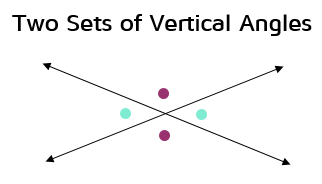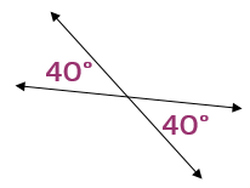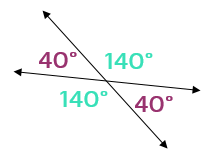Vertical AnglesWhat are Vertical Angles?When two lines cross, they form 4 angles. The angles that are across from each other are called vertical angles. Intersecting lines always form two sets of vertical angles:
|
|
We know that a straight line is always 180 degrees (it's half way around a circle), so we also could use the fact that any two angles right next to each other in the diagram above must also add up to 180 degrees.
You can use what you know about vertical angles and linear pairs to find missing angles formed by intersecting lines.








